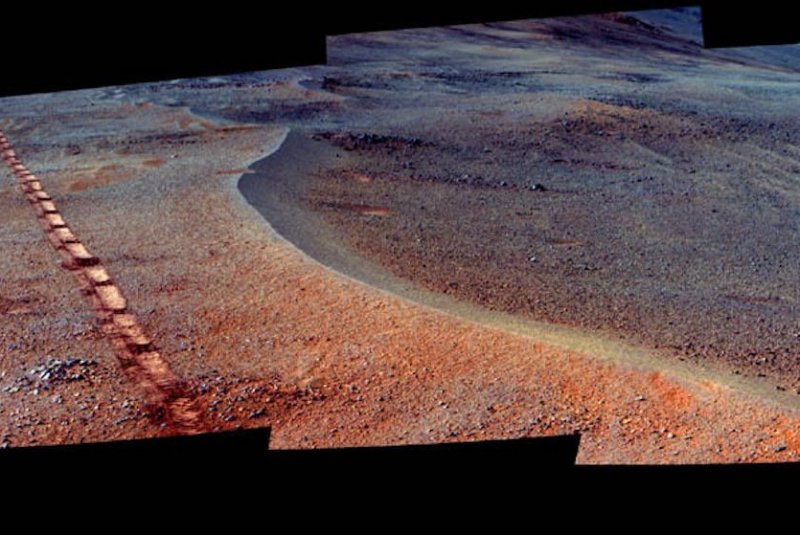June 16 (UPI) -- Earlier this spring, NASA's Mars Exploration Rover, also known as the Opportunity rover, discovered a small Martian crater. The discovery was made on the 45th anniversary of the Apollo 16 mission, NASA's 10th moon landing.
This week, NASA scientists announced the name of that newly discovered crater. They call it "Orion Crater" -- an homage to the lunar module that carried astronauts John Young and Charles Duke to the moon and back.















